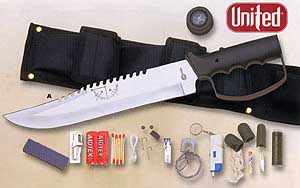Featured Member Video
How to stabilize scales, the easy way.More Videos by Camp10
View larger or ask the author a question.
View all wilderness survival videos
Recent Forum Posts 
| Thread Title | Replies |
| commercial manager salary uk | 2 |
| проститутки кантем... | 0 |
| SAD that this forum........DIED. | 8 |
| best | 0 |
| .......... | 2 |
| weather | 0 |
| AR Pistol Notice | 18 |
| What "ONE" Thing do you h... | 0 |
| "WAREAGLE" Wherefore art-... | 0 |
| Solar Eclipse April the 8th | 3 |
Come Join the Discussion Today!
Our site has been mentioned in:
U.S. News and World Report
Best of the Web - Site of the Week 8/6/01
Discovery Channel Canada
One Week in the Wilderness
USA Today
Hot Sites 08/08/2005
Aquaponics Filters
The nitrogen in your fish tank water is only one part of the waste you'll have to deal with, and that's where filters are going to come in. Solid material, both fish waste and uneaten food will clog things up if there is too much of it. The growing medium used in your plant beds can be thought of as a decent solids filter in itself, and may even be enough for a small system or one that is lightly stocked with fish. If you are using a deep water system that has no medium, then you are definitely going to require some sort of added filter to keep the water free of solids.
And to be clear, solid matter isn't always just chunks building up on the bottom of the tank. It also means the fine bits that float around making your water cloudy.
We already talked about a settling tank as one method for reducing material in your water, but that isn't your only option.
A small system can get some benefit from the typical aquarium filter that pumps water through a mechanical filter (like a sponge) to trap all the particles of solids that are floating around the water. They may not help with the really large chunks because they don't float enough. Larger sponge-based filters are your next step up, and pond-supply companies should have several options. They may not literally have a sponge in them. The same idea can be done with a canister of floss. Either way, it's a straight-forward mechanical filtering process.
If you are still getting a layer of gunk on the bottom, you can either upgrade your filtering options or just add cleaning as a manual chore to your list of things to do. A simple hose can be used to siphon the nasty layer off the bottom just when its necessary.
A swirl filter is a very efficient way of getting solids out of your water, but it does add yet another tank to your system and is not usually necessary for the beginner. They are roughly cone shaped, and the direction of water flowing into them creates a natural spin within the tank that drives the solids to an easily-collected point in the center. Open a valve and all the gunk just oozes out for disposal. A creative person can make a decent one out of a large plastic water bottle (the kind that sits upside down in a cooler). It's the right shape and has a handy opening already in place once you turn it upside down.
Remember that your plants act as a large chemical filter, absorbing all that excessive nitrogen. If you remove several plants at harvest time, that means you've also removed some of your very important filters. Plant new plants as soon as possible, or do a little fish harvest at the same time to keep your system in balance.
Ultimate Survival Knife & Kit |
List Price: 61.99 Our Price: 39.95 |
This 15 inch survival knife with drop point blade features a thick quality stainless steel blade with serrated top edge. Textured and ribbed solid metal handle and guard. Nylon sheath. Survival kit includes a hollow grip with a compass top to store items within the knife itself, as well as additional pouches on the sheath to hold the rest. Complete survival kit. Click Here to Buy the Survival Knife Now. |
|

